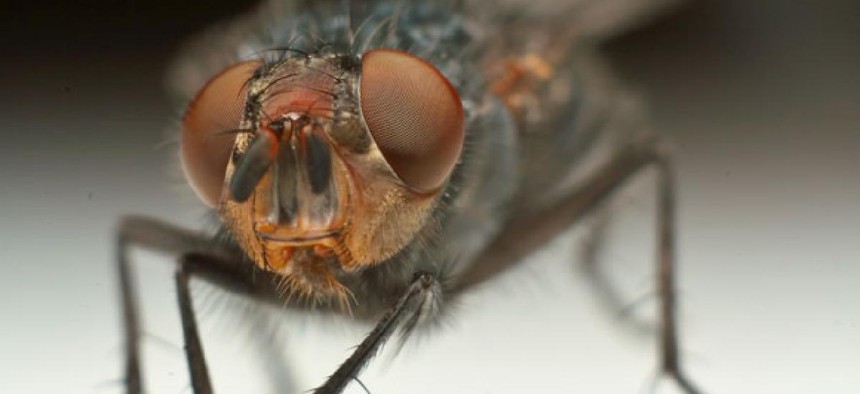Pentagon wants bio-inspired, bug-like sensor systems

PhotoXpress
Satellite imagery tech could be built with tips from nature’s book.
The Pentagon wants sensors that mimic those in spiders, houseflies and other wild creations of nature, a small business tender indicates. The bug-inspired technology could give drone and satellite imagery systems added sophistication to zero in on hard-to-detect targets.
The Air Force is seeking ideas on how to “develop an advanced imaging sensor concept that samples all of the information in the radiation field, taking inspiration from biological systems.”
Engineers can draw new lessons from insects’ ability to see and sense moving objects, the Defense Department suggests. “Arthropods (insects, crustacea, and arachnids) have developed a variety of systems to exploit the information in the radiation field that are worth consideration,” the tender notes.
Defense will start taking proposals on August 27. The solicitation closes on September 6. The Air Force is interested in technologies that can detect environmental depth and aid in navigation. It wants techniques to detect camouflaged and static targets.
The Pentagon has been enamored with the workings of nature for years, funding quirky robots and unmanned aircraft resembling birds and bees.
Compound eyes made up of thousands of photoreceptor units -- as opposed to single aperture eyes of mammals -- is one lesson Defense-funded scientists are drawing from nature’s book. Such eyes give insects a wide-view angle of vision and make them hypersensitive to quick movements.
An Aurora Flight Sciences Corporation research team, together with University of Maryland scientists, has been working to design compound eye-like image-processing systems on micro air vehicles, with the help of Army funding, databases indicate.


